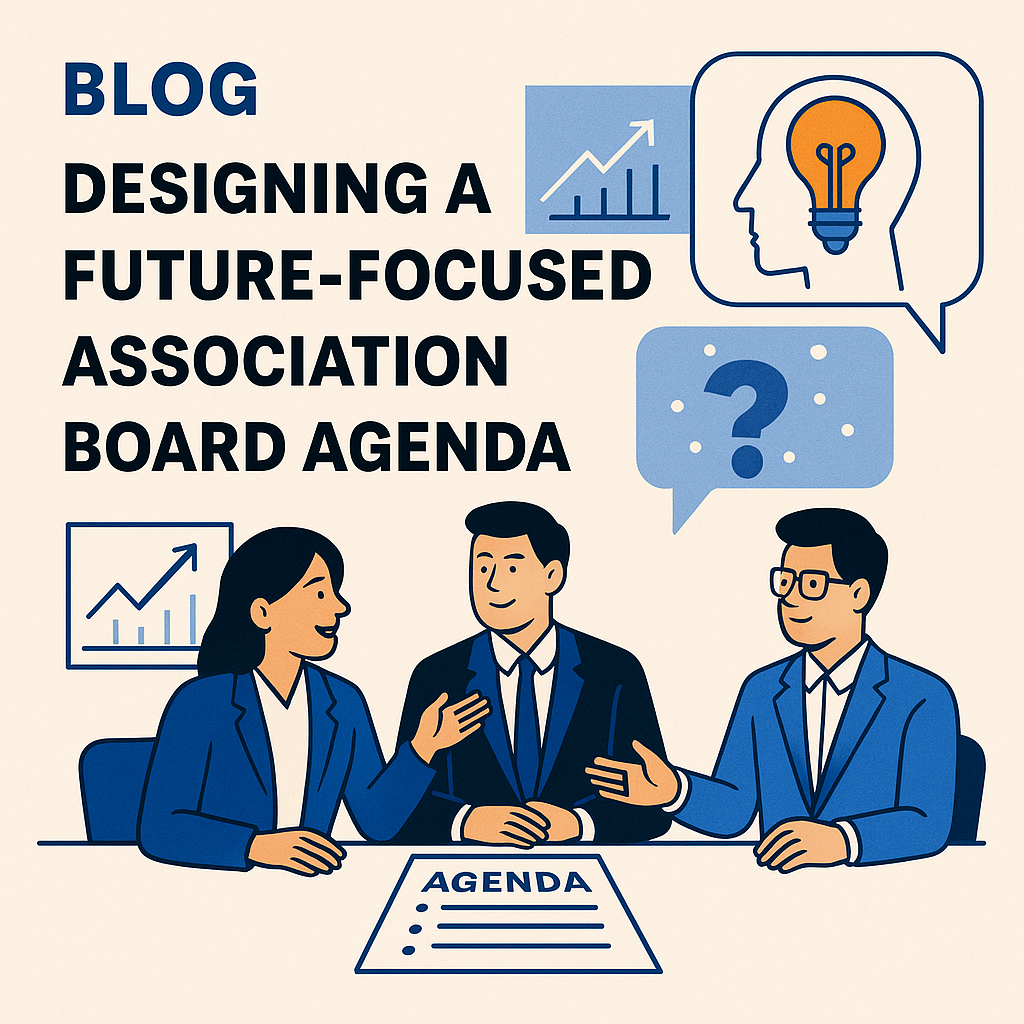
Creating an effective Board agenda is one of the most powerful ways to cultivate your association’s strategic, foresight-driven culture. Too often, Board meetings are dominated by operational updates, committee updates, and backward-looking reports. To build a thriving future, association leaders must structure their Board agendas intentionally — with oversight, strategy, and long-term thinking at the forefront.
Here’s a practical framework for shaping a future-focused Board agenda:
1. Start with a Consent Agenda
A consent agenda groups routine, informational, and non-controversial items into a single vote without discussion. Financial statements, committee reports, and approval of minutes all belong here. This approach saves precious time and signals that the Board focuses on oversight and strategic issues, not micromanagement. This type of consent agenda respects volunteer time by not requiring lengthy updates that could be easily shared in writing.
2. Limit Committee Reports to Strategic Relevance
Committees exist to help advance the association’s strategic goals, not to dominate Board time with operational details. If a committee’s work directly informs a major strategic decision, summarize the key points during the meeting and link them to the association’s broader goals. Otherwise, committee work should be reported through written updates included in the consent agenda.
3. Center the Meeting on the Future
At least 50% of Board meeting time should focus on strategic foresight and the association’s evolving environment. Board members should be engaged in discussions like:
- What emerging trends could reshape our field?
- How are member needs evolving?
- What risks and opportunities are on the horizon?
Use scenario planning exercises, trend analyses, or member feedback insights to provoke conversation. Such exercises move the Board from “what is” to “what could be.”
4. Reinforce Oversight, Not Operations
Remind the Board regularly —verbally and structurally through the agenda — that their role is oversight, not management. Good governance means setting direction, stewarding resources, and ensuring accountability. It does not mean troubleshooting staff issues, rewriting marketing copy, or second-guessing tactical decisions. Keeping discussions focused at the right level strengthens the staff-board partnership and protects the Board’s strategic bandwidth.
Sample Agenda Structure:
- Call to Order and Approval of Consent Agenda (5 minutes)
- CEO Update (limited to strategic-level information) (10 minutes)
- Financial Health and Dashboard Review (10 minutes)
- Strategic Issues Discussion (e.g., trend impact, scenario planning) (30 to 90 minutes)
- Key Decisions (aligned to strategic plan) (15 minutes)
- Board Development or Foresight Moment (5 minutes)
- Executive Session (only if needed)
- Adjournment
Coda:
A Board meeting built on foresight and strategic thinking doesn’t happen by chance but by design. With a disciplined agenda emphasizing oversight, foresight, and strategy, your association’s leadership can spend more time preparing for tomorrow and less time getting stuck in yesterday’s details.